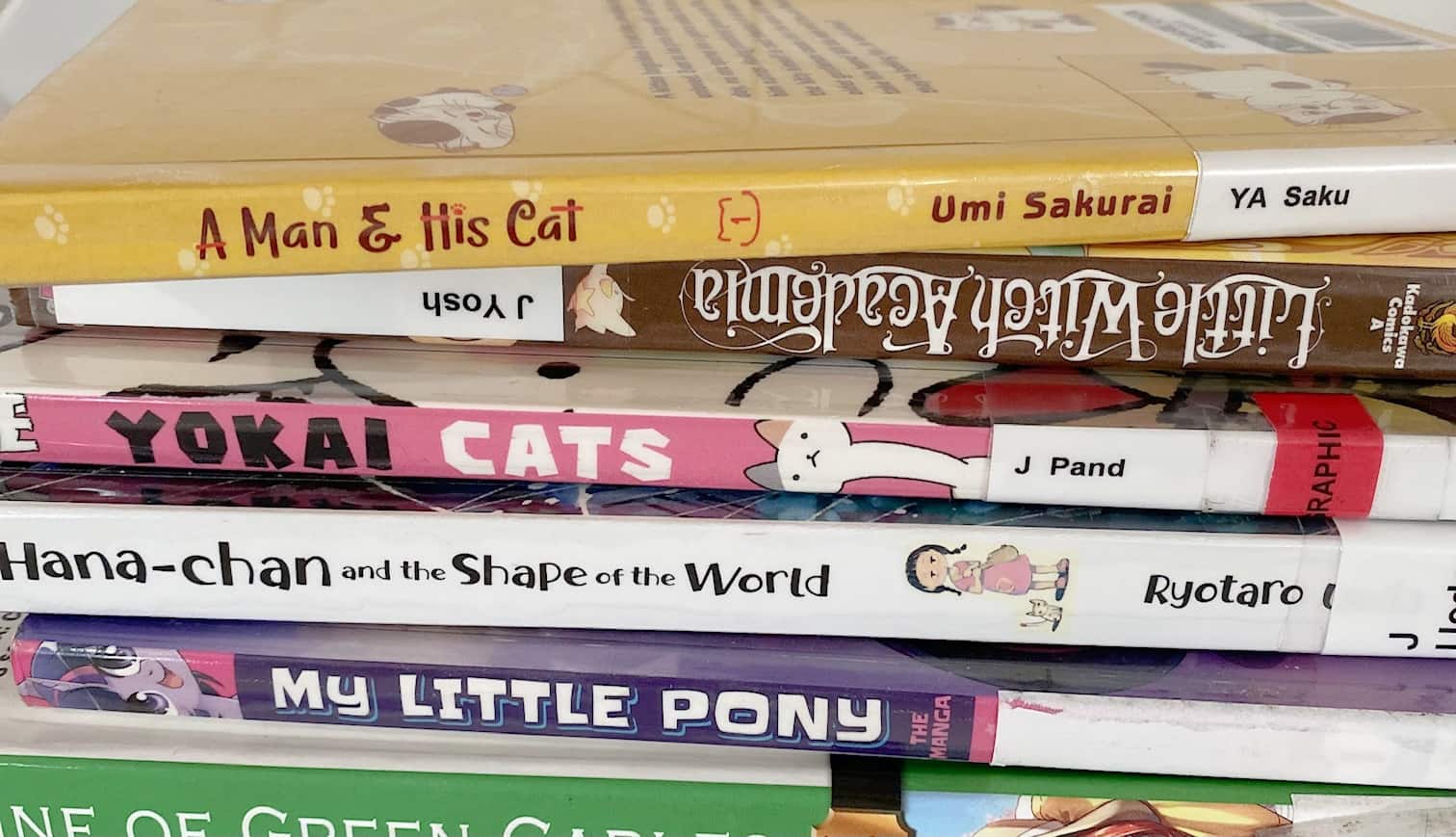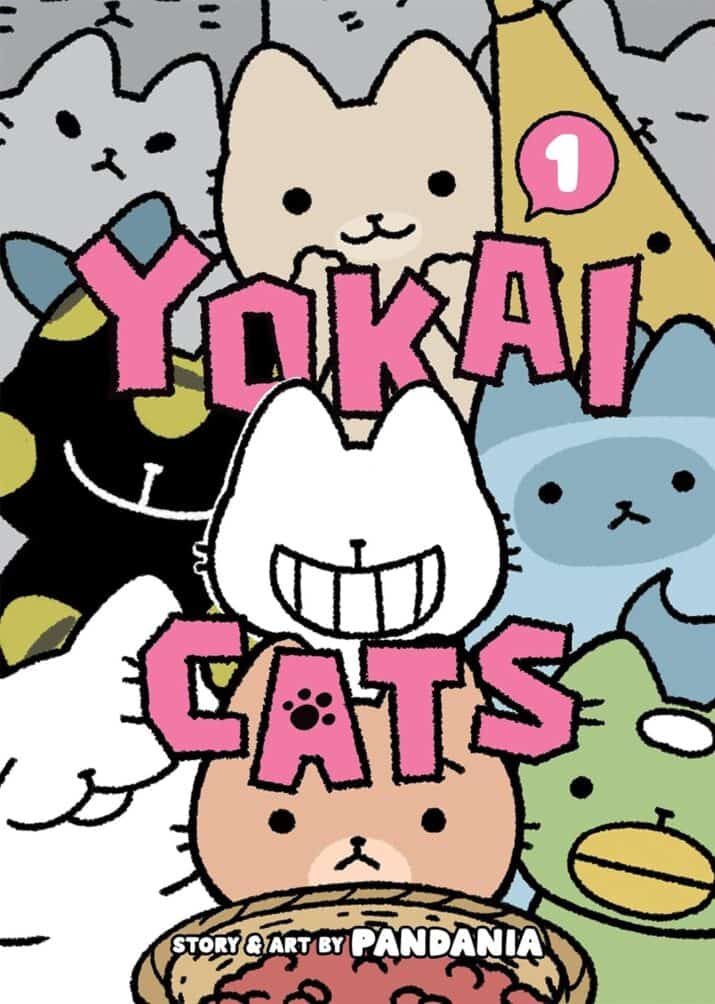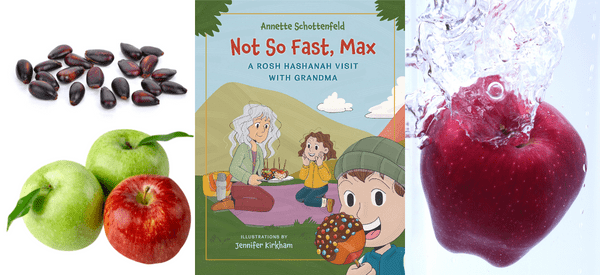10 Popular Manga Books for Middle Grade Readers
This post may contain affiliate links.
Do you know a youngster who enjoys reading manga? Have you found yourself wondering, “Is manga the same as graphic novels or comic books?” or “Isn’t manga for high school students?” or “What exactly IS manga?” If you’ve been asking yourself these questions, I can relate! I gave myself a crash course in manga and manga books for middle grade readers, and I’m ready to share what I learned with you!

As a school librarian, I took pride in reading the books my students were reading. But then they started to request manga books! This felt really out of my comfort zone. If I wanted to find the best manga book series for my elementary school students, I had to do a lot of learning and reading. So, I got started by speaking to a manga expert named Ashley Hawkins.
The Manga Expert, Ashley Hawkins
Ashley is a school librarian who writes a blog called Manga Librarian. Her goal is to educate and inform her colleagues about manga. I asked her three questions to help me understand the value and appeal of manga.
Q: What value does reading manga bring, compared to reading traditional formats?
A: There are a lot of benefits! First, manga is a graphic format, which means it is multimodal. When readers engage with manga, they are utilizing multiple literacy skills- textual and visual. Also, because most manga comes from another culture, it offers insights into Japanese culture, folklore, and daily life.
Q: How has manga evolved over the last few years?
A: We’ve definitely seen manga and anime go much more mainstream over the last few years. When I was growing up, reading manga was not cool at all. Now, we’re seeing so many titles published and manga is outselling American comic books by a large margin.
Q: What would you tell a parent, grandparent, or educator who is trying to understand the appeal of manga?
A: The appeal comes from the artwork, which is dynamic and stylistic. Mangaka have distinctive styles and they can be quite beautiful. There’s also an entire culture tied into it that expands beyond manga into visual and audio mediums such as anime and music and can encompass fashion, hobbies, and artistic expression. Manga and anime are important gateways for young people to build communities.
What I Learned: 10 Things You Should Know About Manga
- Manga and graphic novels are not the same. Manga has a distinctive style. Manga characters generally have large eyes, small mouths, and exaggerated emotions.
- Manga originated in Japan, with a history believed to date back to the 13th century.
- Manga is printed from right to left and intended to be read in that order.
- Manga is heavily illustrated, usually in black and white, with stories told in panels (similar to comics). In manga, the panels (in addition to the pages) are read right to left.
- Manga comes with an age rating on the back cover. This is an important guide to what is appropriate for young readers. A lot of manga is written for teens, young adults, and adults. Some of it has very mature themes. Be certain that you check the ratings and read reviews. Don’t go by the cover image alone.
- Manga is a format, not a genre. Within that format are many genres. Manga genres include adventure, comic, sports, shojo (primarily romance targeted at tween and teen girls) and shonen (primarily action targeted at tween and teen boys).
- Manga series are extensive! In Japan, a manga series may be published weekly or monthly and run for years!
- It is pronounced, “Mahn-gah” /ˈmæŋ.gə/.
- Manga and anime are different, with anime generally referring to the TV show or movies. Often there is a crossover, with a manga series being turned into anime.
- Manga is growing tremendously in popularity, even among elementary school students.
10 Manga Books for Middle Grade Readers (Ages 8 – 12)

All of the manga books below are rated by the publishers as “A” for “All Ages,” with the exception of Yo-Kai Cats (rated ages 10+). My recommendation for the other manga books is for children who are ages 8 to 12.

Chi’s Sweet Home Volume 1 by Konami Kanata
Chi is an adorable kitten who wanders away from his mother and ends up being adopted (albeit reluctantly) by a family with a young boy. The boy, Yohei, and the kitten become close. Chi’s amusing antics take center stage, and it is fun watching her reactions to dogs, cars, and humans. The cute and colorful illustrations, along with the simple story, will appeal to younger readers.

Pokemon Adventures (Red & Blue) Volume 1 written by Hidenori Kusaka and illustrated by Mato
Despite Pokemon being immensely popular for over 25 years, I still find the overwhelming number of titles and formats confusing. For review purposes, I focused only on the Pokemon Adventures series, Volume 1. Anyone who has seen the Pokemon anime is familiar with the basic storyline of the trainer (Red in the book, instead of Ash) striving to be the best trainer around. This leads him to some epic battles. Parents should know that, although it is rated “A” for “All Ages,” there is a fair amount of violence, making it better suited for older elementary. The artwork is expressive and appealing.

Kirby Manga Mania, Volume 1 by Hirokazu Hikawa
An engaging, cute character named Kirby (essentially a pink hero-puffball) gets into some sticky situations as he battles his rival, King Dedede. There is a lot of action, movement, and tricky situations. Parents should be aware that in the opening scene, Kirby drinks “loopy juice” that alters his behavior and wrecks the party. Overall, kids will enjoy the fast pace, gags, and action.

My Little Pony, The Manga: A Day in the Life of Equestria, Volume 1 written by David Lumsdon and illustrated by Shiei
Unlike traditional manga, this volume is read left to right, which may make it easier for emerging readers. True to manga form, it has expressive black and white graphics, panels, and engaging art work. The story will appeal to anyone who enjoys the My Little Pony TV series. Volume 1 moved quickly and had some funny moments that would appeal to older readers, while the cute characters would appeal to a younger audience.

Yo-Kai Watch, Volume 1 by Noriyuki Konishi
Fans of Pokemon will embrace this series that tells of the adventures of an average kid named Nate Adams. Nate is given a watch that allows him to see all kinds of magical creatures called Yo-Kai. He and his Yo-Kai friend, a cat named Whisper, proceed on all kinds of adventures as they battle and befriend different Yo-Kai. I like the manga books, but I am not recommending the anime on which this series is based, as I’ve read mixed reviews.

A Man and His Cat, Volume 1 by Umi Sakurai
This is a “slice of life” story, following a man and his newly adopted cat as they learn how to live with one another. Both had experienced loneliness, and they found companionship and happiness in sharing their lives with one another. For children who like a lot of action and adventure, this might be too slow. Cat lovers will enjoy it.

Little Witch Academia, Volume 1, written by Trigger & Yoh Yoshinari and illustrated by Keisuke Sato
The main character, Akko is determined to become a witch and attend Luna Nova Witchcraft Academy. There is one main problem: she is not magical yet! She even has trouble finding the school and figuring out how to get inside. The story and the illustrations were a little scattered and hard to follow. There were moments of humor, magic, and mystery that will engage young readers.

The Fox and Little Tanuki, Volume 1, by Mi Tagawa
Long ago, a few animals were granted magical powers in order to do good. One animal, Senzou the Fox Spirit, abused his magical powers. He now has to pay for his bad deeds by raising an adorable and mischievous cub named Manpachi. The developing relationship between the two characters is predictable but entertaining. Parents will want to know that there is some language (“sucks,” “piss me off”) that might be inappropriate.

Nicola Traveling Around the Demon’s World, Volume 1,by Asaya Miyanaga
Little Nicola is a human girl and aspiring witch who stumbled into the “Demon World.” She quickly becomes friends with a demon named Simon and the two of them travel around, trying to conceal that Nicola is human since humans are not allowed. They stumble upon adventure and intrigue. Nicola is kind and questions everything, including stereotypes, which helps Simon see things in a new way. An appealing story of adventure, fantasy, and friendship.

Yo-kai Cats, Volume 1 by Pandania – Rated “Ages 10+”
In Japanese, Yo-Kai means strange or supernatural. The supernatural cats in this book get into all kinds of mischief. Yes, they are cuddly and cute to look at. But they have necks that stretch out to steal food off the counter or half cat / half mermaid bodies that make these Yo-kai cats full of surprises.

KEEP READING









